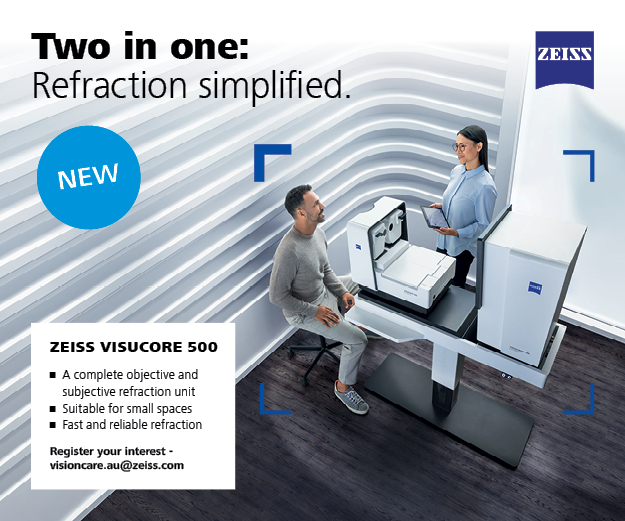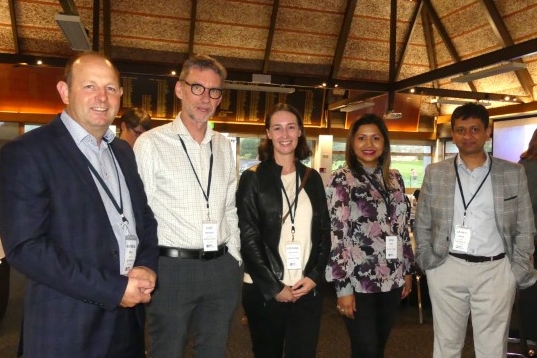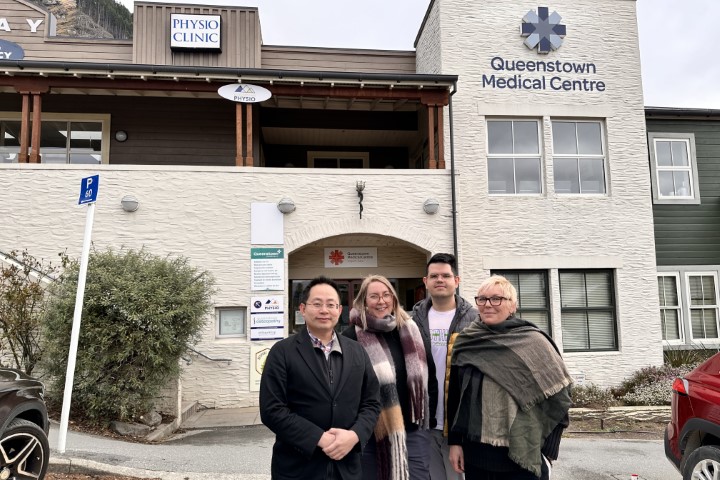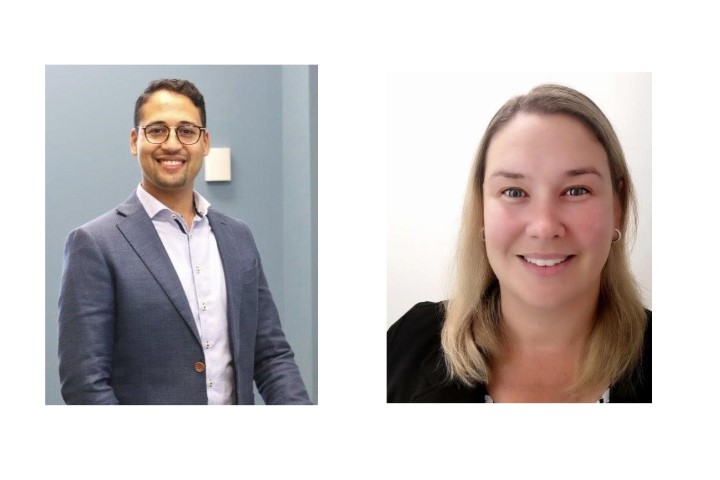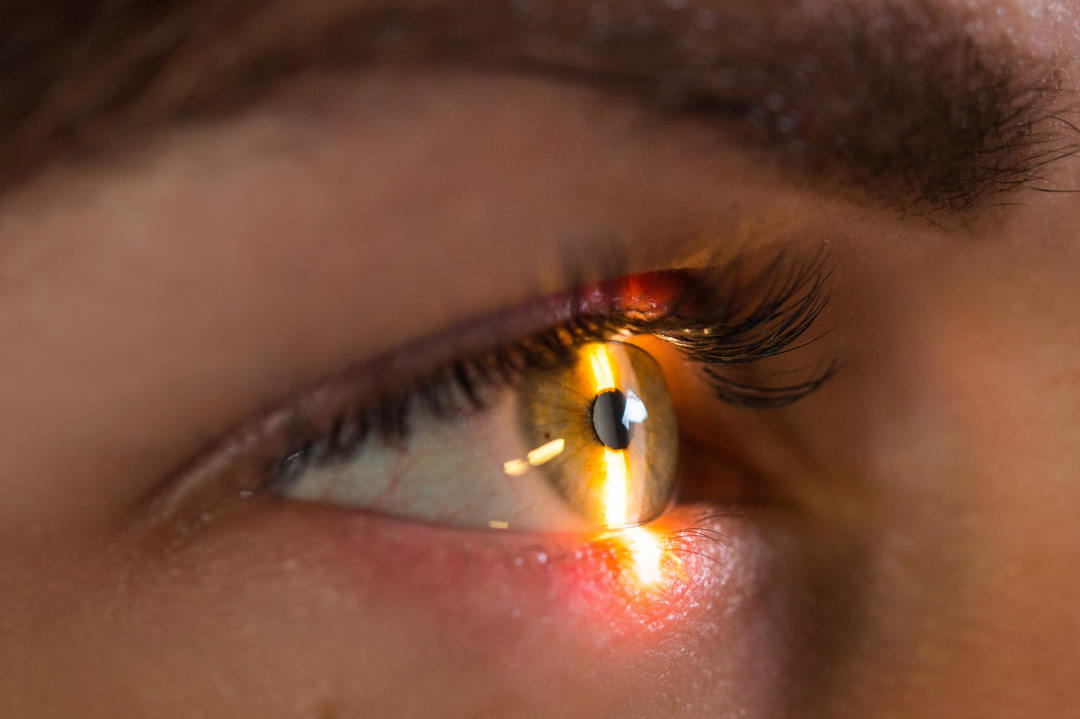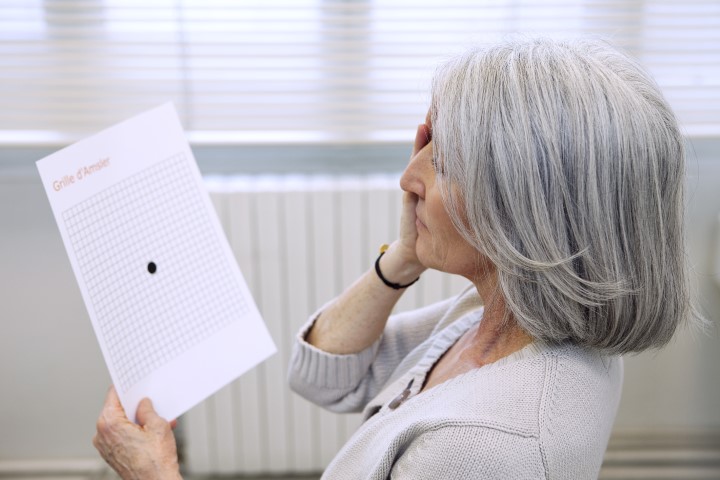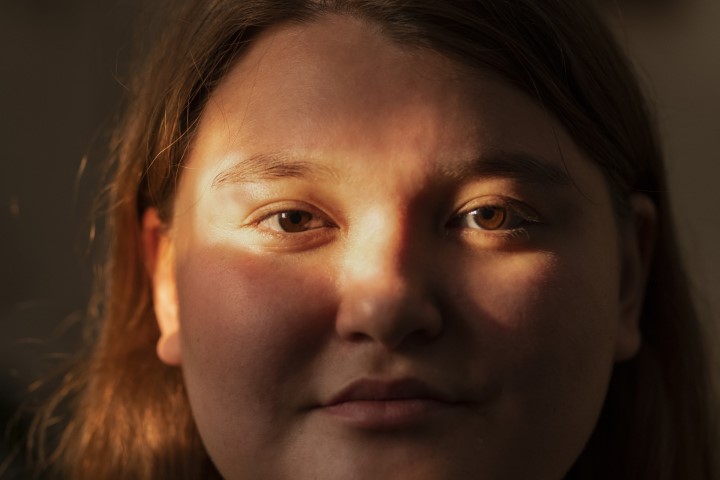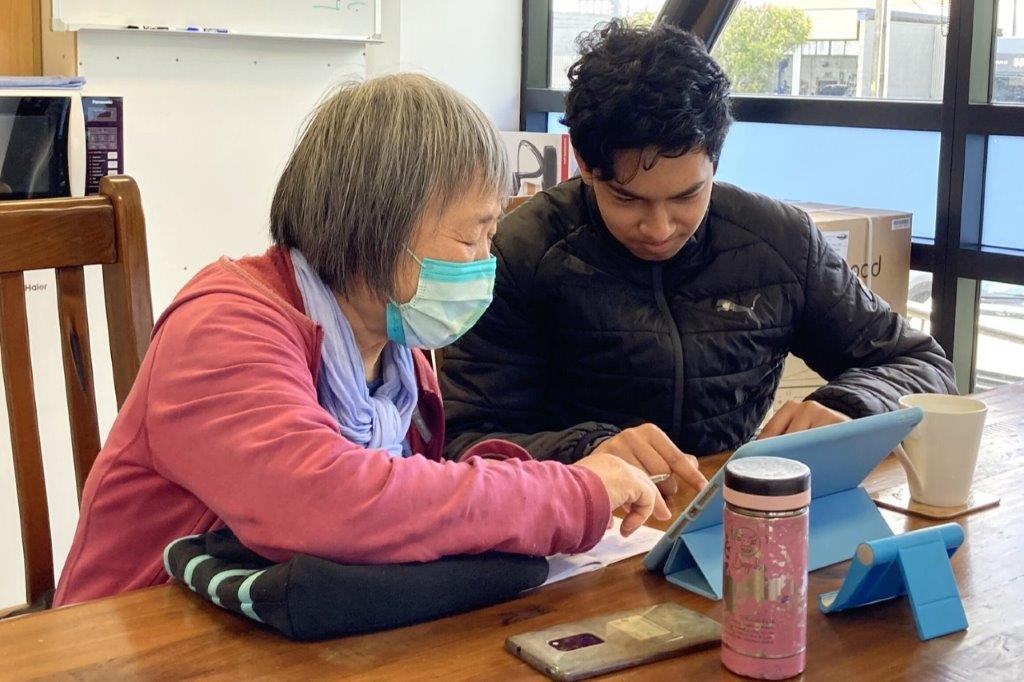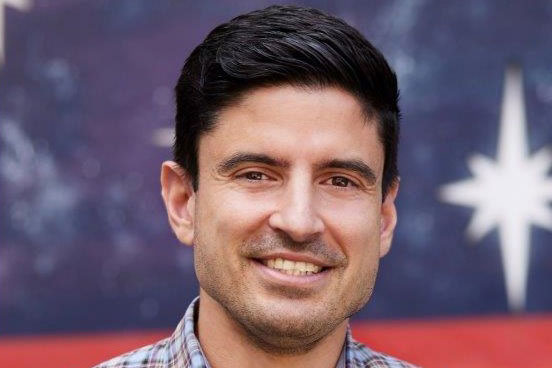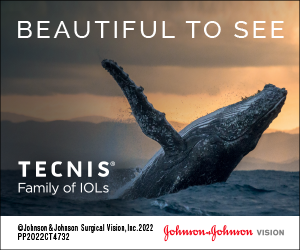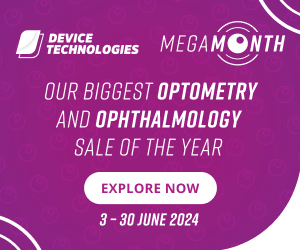Autumn leaves and learning
The ever-popular Eye Doctors’ April Grand Round offered plenty of learning and a welcome opportunity to catch up with colleagues. Hosted at the Remuera Golf Club, guests were treated to insights into a variety of eye conditions while enjoying a two-course dinner.
Ask about diet!
Dr Julia Escardó-Paton shared an alarming case of nutritional optic neuropathy, a rare but entirely preventable disease which can cause severe vision loss if not caught early. Throughout history, it has typically occurred in populations affected by war or famine. However, there is an emerging group of patients at risk of developing this pathology, especially those who have undergone bariatric surgery, have restrictive or vegan diets, and autistic patients with food selectivity issues, she said.
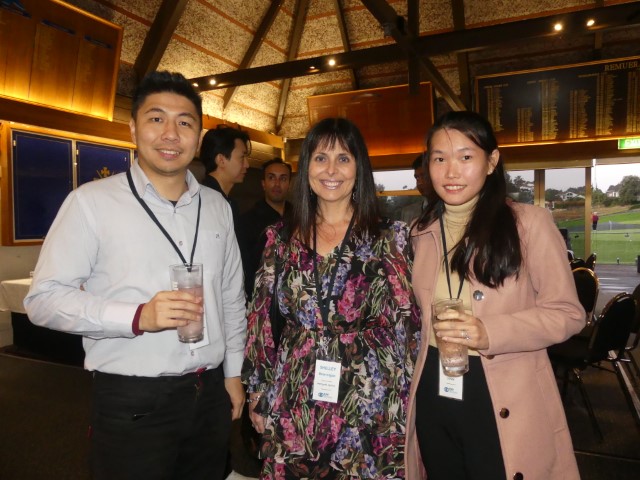
Ricky Lee, Shelley Brannigan and Solinna Toul
Dr Escardó-Paton’s case concerned a 12-year-old Samoan boy referred for reduced vision (counting fingers, right and left eye), headaches and poor night vision. After thorough history-taking and examination, all signs pointed to nutritional optic neuropathy. The boy’s diet consisted of hot chips, white bread with Nutella and instant noodles, creating deficiencies in vitamins B12, A, D, C and zinc. The patient was admitted by paediatrics but despite supplementation, B12 injections, Stoss treatment (oral vitamin D) and a host of other inventions, there was only marginal recovery of vision after 12 months.
Cases and quizzes
Having just returned from Niue, Dr Penny McAllum turned our attention to corneal hydrops. She shared the case of a 53-year-old South African man with bilateral post-LASIK ectasia. Although corneal hydrops with perforation in the setting of post-LASIK ectasia is very rare, it may, as in this case, be associated with a flap tear requiring penetrating keratoplasty. Patients presenting with corneal hydrops require close monitoring and are typically managed with lubrication, she said. A referral is required if the cornea is inflamed, vascularising, perforated, soft eye or with shallow anterior chambers.
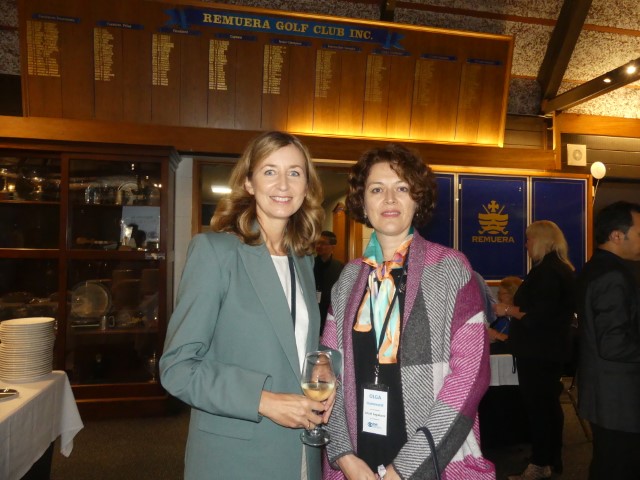
Dr Penny McAllum with Olga Hammond
Dr Mark Donaldson shared a case on cerebrovascular thromboembolism, highlighting the rapid advances in endovascular treatment aiding recovery. Prompted by the arrival of the RayOne enhanced monovision intraocular lens (IOL) in New Zealand, Dr Donaldson also discussed the challenging matter of IOL choice and the growing popularity of bilateral cataract surgery. The latter, he said tongue-in-cheek, at least removes the element of comparison.
Discussing screening and treatment for vein occlusion, Dr Andrew Riley suggested a high threshold for investigating branch retinal vein occlusion (BRVO) and central retinal vein occlusion (CRVO) in young patients (<50 years) with no clinical suspicion of systemic issues. Prior to any thrombophilia screening, Dr Riley recommended discussion with a haematologist first. Touching on treatment, Dr Riley said evidence on combination treatment is conflicted. While both BRVO and CRVO benefit from anti-vascular endothelial growth factor, laser might help reduce the treatment burden and be better for the patient, he said.
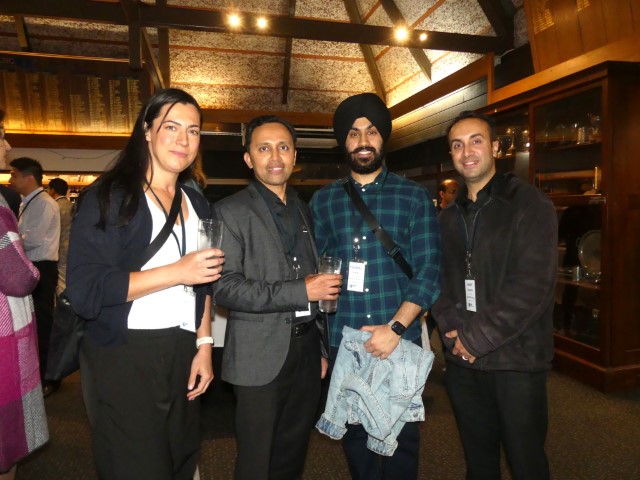
Diana Perryman, Amit Patel, Yuvraj Singh and Ranit Kapadia
Wrapping up, Dr Arvind Gupta explored the aetiology, diagnosis and causes of pseudo-papilloedema. Often diagnostically challenging, the condition sometimes requires a combination of symptoms and signs to be present for the eye surgeon to deliver a diagnosis with certainty, he said. Dr Gupta’s tricky OCT imagery quiz challenged guests to identify pseudo-papilloedema and two of its causes – optic drusen and peripapillary hyperreflective ovoid mass-like structures (PHOMS).

Coco Cui, Tricia Tsay and Jason Xu
Practice manager Shellene Garofalakis rounded off a successful evening by inviting optometrists (and NZ Optics readers) to visit the Eye Doctors team at its new purpose-built clinic at Ascot Central (right next to its old premises).





